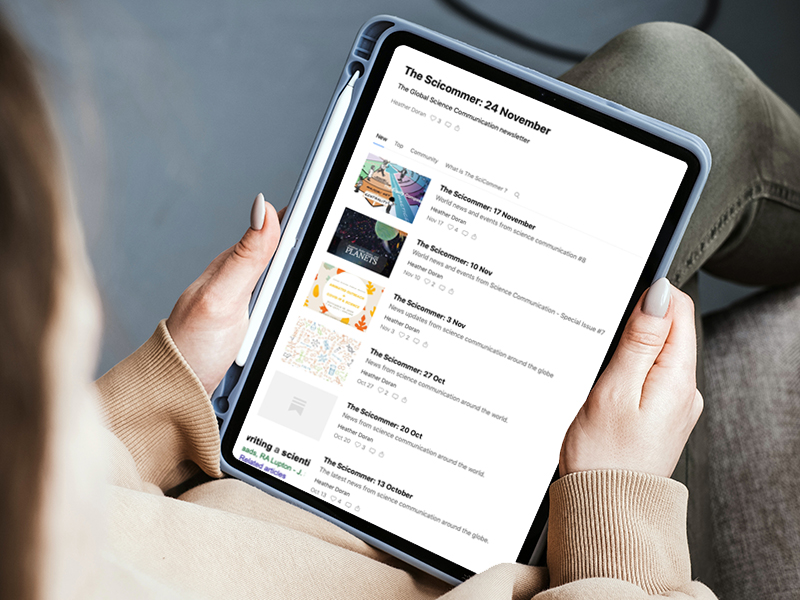27 November 2020
Meet Heather Doran, PCST committee member and the author of a new science communication newsletter.
Hi Heather! You’ve recently started a science communication newsletter. Could you tell us a bit about the background to that?
I have always been involved in discussions about science communication across different social media networks and I realised that I gather a lot of useful information from my connections around the world. The use of social media to communicate has increased and many more science communication activities have moved online. This year has provided an unusual opportunity for people to connect with each other virtually no matter where they are around the world. Science communication is under focus in most countries across the world right now too. I realised that there wasn’t one place that pulled all of this information from Twitter, Facebook and email discussion lists together and thought it might be useful for people if that were to happen!
What are your ambitions for the newsletter?
My main ambition was that people would read it and find it useful. From the feedback I have had so far it seems to be hitting that goal. I got a high number of subscribers really quickly and I can see that people open and read the newsletter each week. I hope it reminds people that science communication research and practice can be linked and that people all over the globe are active in the field of science communication. If people were to connect through the newsletter and create something amazing together that would be fantastic.
What are your favourite things to write about in terms of the sci-comm scene? What don’t you think gets covered enough?
I really enjoy covering stories that might have appeared in non traditional sci-comm spaces – for example commentary on science communication that might appear in a local newspaper or research linked to science communication that is published in a journal that isn’t focused on science communication. Looking beyond the silos I suppose. I also love to see student activity in science communication and these can be long running projects (like student science magazines) that can exist under the radar.
What’s your own background, and how did you get involved in science communication to start with?
I started ‘doing’ science communication when I worked in industry. I worked on creating demonstrations to show the science of toothpaste! I am always aware of science communication beyond the higher education sector although that is where I have spent most of my time. I really connected with science communication networks and research though when I began my PhD at the University of Aberdeen. There I met Dr Ken Skeldon who was the head of science communication and there was a lot of activity in the city. I co-founded a science magazine with a group of fellow students, developed science communication events, joined Twitter and started blogging which really connected me with people globally. When I finished my PhD I moved into a public engagement role and this was all about embedding engagement into research – this was a fantastic role and placed me in a slightly different place – rather than ‘doing’ science communication I was thinking more about its purpose, how to involve people in research and how to support research to do this. In 2015, I was awarded a fellowship from the Winston Churchill Memorial Trust and traveled to the USA, China and Japan to look at how people are communicating about science on social media. That was an incredible experience and I got to connect with science communicators all around the world. Now I am the Public Engagement Manager at the Leverhulme Research Centre for Forensic Science where our work here definitely spans the areas of science engagement in practice and theory.
You can sign up for the newsletter, and/or follow Heather on Twitter. Thanks for the great resource and for talking with us, Heather!



